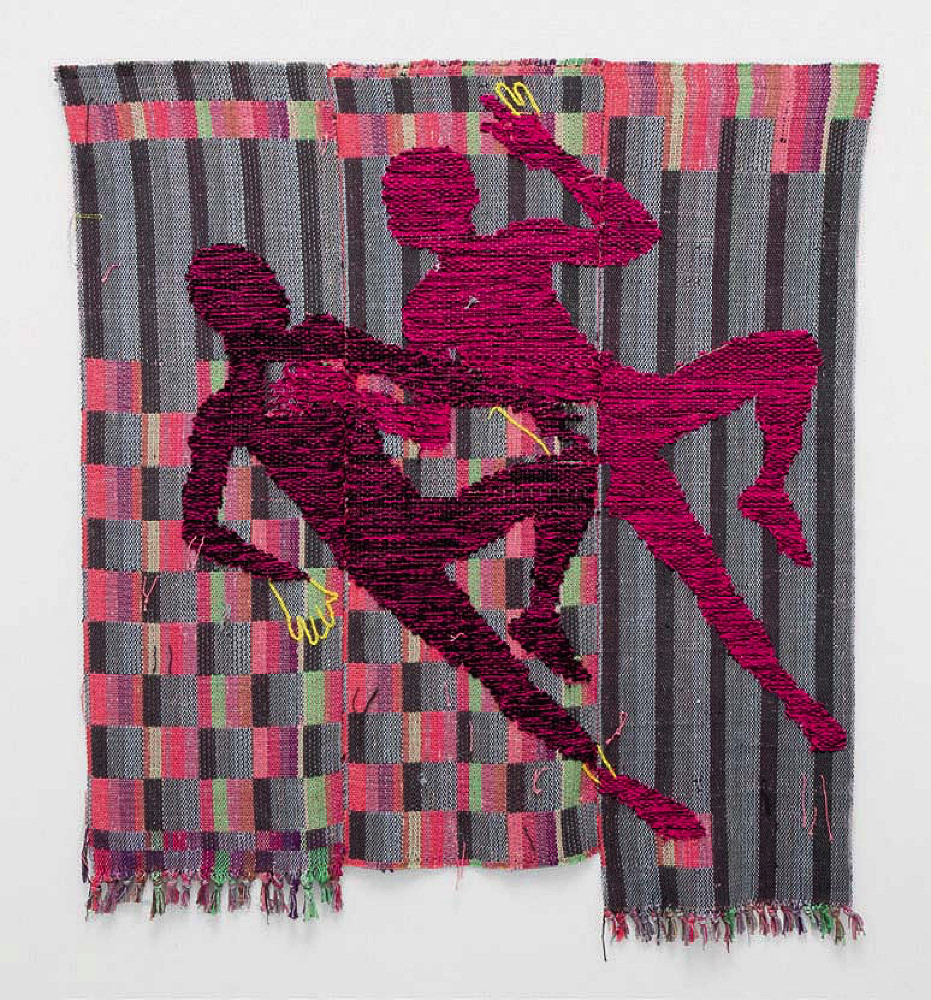Katherine Bradford’s color-saturated works often feature bold, fluid forms: swimmers and superheroes, or human bodies lodged within an amorphous frame of time and space. One recent painting, Mother’s Lap, offers softened geometric figures; one is flat-out horizontal, perpendicular to another dressed in tangerine orange with a block of canary yellow across her bosom. The New York-based Bradford made it during the 2020 pandemic summer, “when there was high anxiety about the future and our health and politics and protests and elections and our president,” she said during a talk hosted by the Carpenter Center for Visual Arts, “and I thought maybe being on your mother’s lap was a good place to be during all this.”

Mother’s Lap is part of the Carpenter Center’s first post-COVID-19 exhibit: “Diedrick Brackens and Katherine Bradford” (September 24-December 23). Like Bradford, Brackens borrows from figurative, abstract, and representational styles, but his medium is textiles. Using West African, South American, and European techniques, he weaves large-scale tapestries, combining personal and historic themes. “Both artists create dreamlike scenes that snap back and forth between the symbolic and the specific,” noted Carpenter Center Robinson Family director Dan Byers, who curated the show. “Their scenes seem to exist both outside and deeply embedded within this uncertain time, evoking cautions, questions, and desires about our bodies in relation to each other.”
Stuck in their respective abodes, the artists naturally reflected on the pandemic’s impact on their isolation, intimacy, and the capacity for human attachment. Brackens missed tactile connections. He scanned what he had on hand in his Los Angeles home, and used bed linens, curtains, and rugs as a palette. He was also immersed in poetry. The resulting nuclear lovers (woven cotton and acrylic yarn in tones of grays and pinks, at left)reflects the eponymous work by Assotto Saint, a prominent figure in the New York City LGBT and African American art scene of the 1980s and 1990s. Brackens’s tapestry extends Saint’s notion of unearthing post-apocalyptic bodies in repose. “When the world ends, we will sort of bury ourselves together in each other’s arms, embrace,” Brackens explained during the talk, “and when it regenerates, it will be because of the love that we have for one another.”









